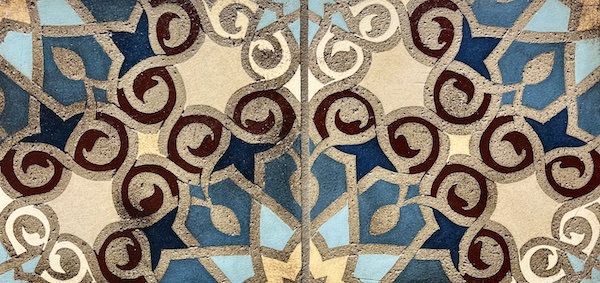The tile markets of yesteryear and today have and continue to provide significant confusion and mislabeling of tile products. Is it encaustic tile, hydraulically-pressed cement tile, or handmade concrete tile? One may think that they are about the same, but there are significant and distinct different characteristics of each type.
Because there is often so much confusion about these products, this article explores the definition, origins, history, manufacturing and composition of encaustic, pressed cement floor tile and concrete floor tile. Our December article will detail installation processes and techniques for these different tile types.
Definitions
Encaustic tile:
- Fundamentally, encaustic tiles are inlaid tiles, where one or more different colored clays are inlaid in a clay tile that is then fired and normally destined for a floor installation. [Definition courtesy of the Tile Heritage Foundation]
- A tile decorated with colored clays inlaid and fired. [Meriam-Webster Dictionary]
Pressed cement tile: Cement tiles, also known as hydraulic tiles, are handmade colorful tiles normally used on floors. Floors or walls covered with these tiles are known for their diverse use of color and patterns.
Concrete floor tile: concrete floor tile is made by pouring or pressing concrete into molds and allowing it to cure. It is available in many colors and various shapes as well as a variety of looks including terracotta, Saltillo, natural stone, brick, and raw concrete.
History
Encaustic is a Greek word (enkaustikios) meaning “to heat or burn in.”
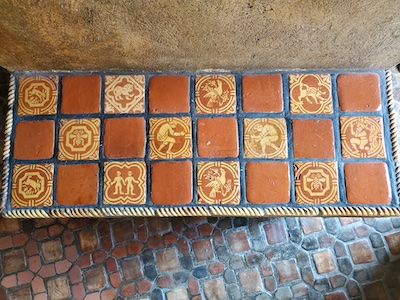
A safe speculation is that inlaid tiles evolved from the utility, aesthetics and popularity of mosaic floors that had existed for centuries in pre-Roman Europe and the Middle East. By the 13th century, inlaid tiles were being commonly produced for the floors of abbeys, cathedrals, and parish churches, as well as royal palaces in Europe. With the crowning of King Henry VIII in England and the subsequent Dissolution of the Monasteries in 1537, many of the religious buildings fell into ruin, their inlaid tiles forgotten amidst the accumulating debris.
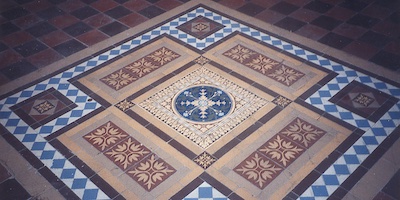

Nearly 300 years would pass before these medieval inlaid tiles were unearthed, awakening a tile renaissance in the early 19th century that would soon cross the Atlantic and last 100 years before being interrupted by the World Wars. The Gothic Revival in England spearheaded by architects like A.W.N. Pugin among others who were inspired by the rediscovery of these artistic inlaid creations got the attention of the large tile manufacturers like Minton & Company to recreate what had become known as “encaustic” (from Greek meaning “burnt in”) tiles.
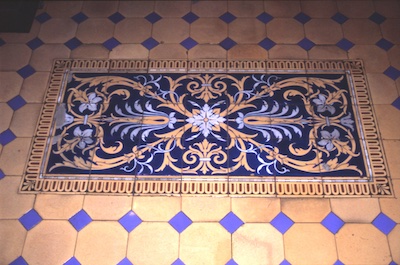

An early and most notable installation of Minton’s encaustic tiles in the United States was in the new U.S. Capitol Building in Washington, D.C. where 100,000 sq.ft. had been specified in the 1850s. It would be 20 years later before the first encaustic tiles were being successfully manufactured in the U.S. Samuel Keys, an Englishman by birth who had immigrated to America in 1862, introduced his bi-colored encaustic tiles at his Pittsburgh Encaustic Tile Company in 1876. [Encaustic tile history courtesy of the Tile Heritage Foundation].
Cement tiles appeared in the 1850s in Catalonia, Spain. They were exhibited in the Paris (France) International Exposition of 1867 by the Catalan company Garret & Rivet.
In the United States, several sources say the first tiles were made near the country’s first Portland cement plant, which due to unclear history, may have been in Michigan or Pennsylvania. Around the turn of the 20th century, these tiles were very popular and were considered a high-end floor covering. They were used in thousands of landmark public buildings and palaces. Their popularity began to wane in the 1920s but spread again in the ’40s primarily in California and Florida.
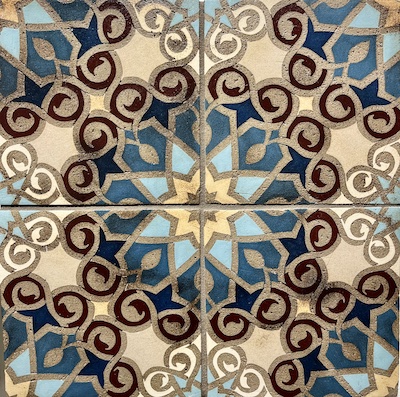

How it is made and characteristics
Encaustic tile: ceramic tile in which the pattern or figure on the surface is not a product of the glaze, but of different colors of clay. The pattern appears inlaid into the body of the tile, so that the design remains as the tile is worn down. These tiles are usually of two colors, but a tile may be composed of as many as six. The inlay may be as shallow as 1/8″ (3 mm), as is often the case with “printed” encaustic tile from the later medieval period, or as deep as a quarter inch. Encaustic tiles may be glazed or unglazed.
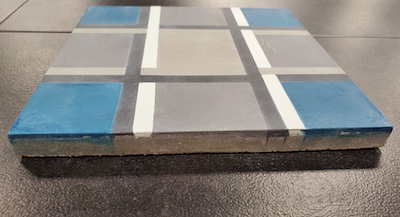

Pressed cement tile: Cement tiles are made by hand and include three layers to produce a finished tile. The first layer (wear surface) is a mixture of high-quality white Portland cement, marble powder, fine sand, and natural mineral color pigments that is placed inside a handmade metal form that is enclosed in a metal mold. After the form is removed, the second layer consists of finely-graded sand and gray Portland cement is placed over the first layer. The third layer is a coarse mixture which incorporates rich high-quality cement. The three layers are compacted using a hydraulic press operated either by hand, which may exhibit inconsistent pressure or electric-powered hydraulic presses, using high pressure up to 1,500 psi. The tile is removed from the mold, washed, allowed to dry, boxed, and ready for shipment.
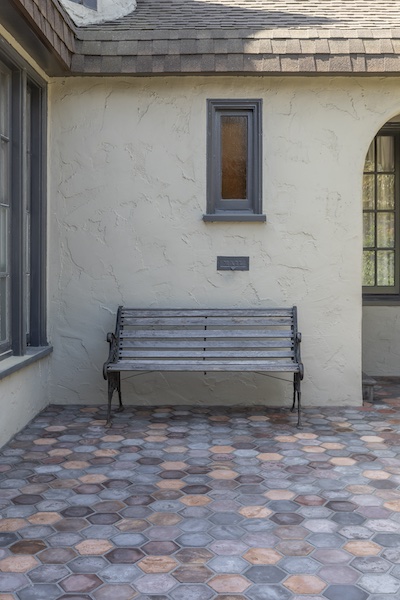

Although sometimes mistakenly called encaustic tile, which refers to kiln-fired clay tile or commonly used ceramic tiles, cement tiles are not fired and have no glaze layer on the face of the tile.
Concrete floor tile: Concrete floor tile utilizes a custom-blended liquid color pigment which is added to the gray concrete, thoroughly mixed, and placed in molds. When it is cured, the tile is removed from the mold by hand, boxed, and ready to ship. The tile color extends through the entire thickness of the tile. As with most concrete products, concrete tile is porous and should be properly sealed.
Conclusions
Encaustic tile obtains its pattern and color from one or more different clays which are pressed into to a mold and fired in a kiln. However, many pressed cement tiles are marketed as encaustic, which is incorrect since they are not fired in a kiln. They are more correctly listed as an encaustic patterned tiles, encaustic design tiles or cement encaustic tiles.
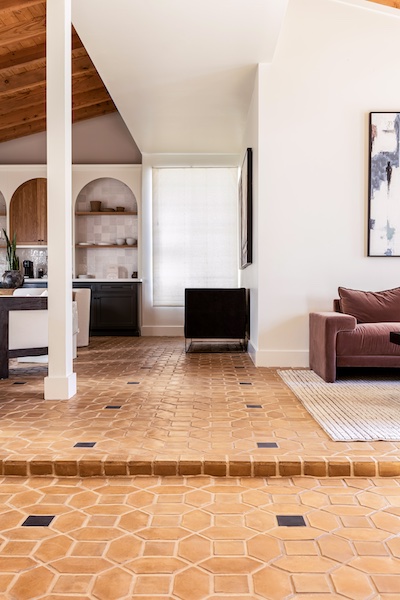

Additionally, when considering installing pressed cement tiles, especially for the first time, it would be wise to consult the Chapter 8 Material-Specific Installations in the 2023-2024 NTCA Reference Manual, pages 236-239. These pages provide excellent information on this topic including installation guidance, the “problem, cause, and cure” section, and handling maintenance issues.
As with any tile product, always follow the tile manufacturer’s instructions to the letter by using the appropriate installation products and procedures.


Scott Carothers
Scott Carothers is the Acdemic Director for the Ceramic Tile Education Foundation (CTEF) and is responsible for the creation of the Certified Tile Installer (CTI) program, and is involved in the creation of the Advanced Certifications for Tile Installers (ACT) program as well as providing training to others in the tile industry.
Carothers has been involved in the ceramic tile industry for nearly 40 years and was the owner of a successful retail and installation firm prior to CTEF. He has served as President and Chairman of the Board of the National Tile Contractors Association (NTCA), Chairman of the NTCA Technical Committee, was named the NTCA Tile Person of the Year in 2005, and the NTCA Ring of Honor recipient in 2013. He is a voting member of the ANSI and the TCNA Handbook committees.


